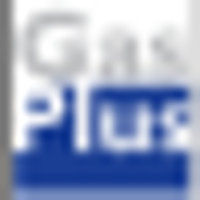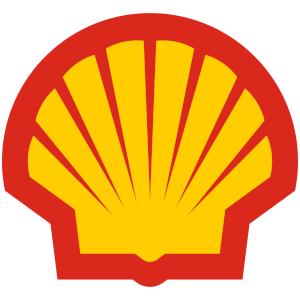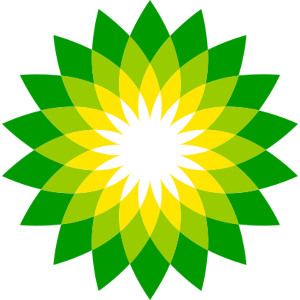
Gas Plus SpA
MIL:GSP

Profitability Summary
Gas Plus SpA's profitability score is hidden . We take all the information about a company's profitability (such as its margins, capital efficiency, free cash flow generating ability, and more) and consolidate it into one single number - the profitability score. The higher the profitability score, the more profitable the company is.
Profitability Score
We take all the information about a company's profitability (such as its margins, capital efficiency, free cash flow generating ability, and more) and consolidate it into one single number - the profitability score. The higher the profitability score, the more profitable the company is.
We take all the information about a company's profitability (such as its margins, capital efficiency, free cash flow generating ability, and more) and consolidate it into one single number - the profitability score. The higher the profitability score, the more profitable the company is.
Profitability Score
Margins
Profit margins represent what percentage of sales has turned into profits. Simply put, the percentage figure indicates how many cents of profit the company has generated for each dollar of sale.
Profit margins help investors assess if a company's management is generating enough profit from its sales and whether operating costs and overhead costs are being contained.
Earnings Waterfall
Gas Plus SpA

|
Revenue
|
135.7m
EUR
|
|
Cost of Revenue
|
-37.2m
EUR
|
|
Gross Profit
|
98.5m
EUR
|
|
Operating Expenses
|
-68m
EUR
|
|
Operating Income
|
30.5m
EUR
|
|
Other Expenses
|
-15.8m
EUR
|
|
Net Income
|
14.7m
EUR
|
Margins Comparison
Gas Plus SpA Competitors

| Country | Company | Market Cap |
Gross Margin |
Operating Margin |
Net Margin |
||
|---|---|---|---|---|---|---|---|
| IT |

|
Gas Plus SpA
MIL:GSP
|
142m EUR |
73%
|
22%
|
11%
|
|
| SA |

|
Saudi Arabian Oil Co
SAU:2222
|
6.7T SAR |
54%
|
43%
|
22%
|
|
| US |

|
Exxon Mobil Corp
NYSE:XOM
|
470.7B USD |
30%
|
13%
|
10%
|
|
| US |

|
Chevron Corp
NYSE:CVX
|
242.5B USD |
38%
|
13%
|
9%
|
|
| UK |

|
Shell PLC
LSE:SHEL
|
153.8B GBP |
26%
|
12%
|
6%
|
|
| NL |
R
|
Royal Dutch Shell PLC
OTC:RYDAF
|
202.4B USD |
26%
|
12%
|
6%
|
|
| CN |

|
PetroChina Co Ltd
SSE:601857
|
1.5T CNY |
15%
|
9%
|
6%
|
|
| FR |

|
TotalEnergies SE
PAR:TTE
|
116.6B EUR |
35%
|
13%
|
8%
|
|
| CN |

|
China Petroleum & Chemical Corp
SSE:600028
|
690.1B CNY |
8%
|
2%
|
2%
|
|
| UK |

|
BP PLC
LSE:BP
|
56B GBP |
25%
|
7%
|
0%
|
|
| BR |

|
Petroleo Brasileiro SA Petrobras
BOVESPA:PETR4
|
398.5B BRL |
47%
|
35%
|
17%
|
Return on Capital
Return on capital ratios give a sense of how well a company is using its capital (equity, assets, capital employed, etc.) to generate profits (operating income, net income, etc.). In simple words, these ratios show how much income is generated for each dollar of capital invested.


Return on Capital Comparison
Gas Plus SpA Competitors

| Country | Company | Market Cap | ROE | ROA | ROCE | ROIC | ||
|---|---|---|---|---|---|---|---|---|
| IT |

|
Gas Plus SpA
MIL:GSP
|
142m EUR |
7%
|
3%
|
7%
|
5%
|
|
| SA |

|
Saudi Arabian Oil Co
SAU:2222
|
6.7T SAR |
26%
|
16%
|
36%
|
19%
|
|
| US |

|
Exxon Mobil Corp
NYSE:XOM
|
470.7B USD |
14%
|
8%
|
13%
|
10%
|
|
| US |

|
Chevron Corp
NYSE:CVX
|
242.5B USD |
11%
|
7%
|
11%
|
7%
|
|
| UK |

|
Shell PLC
LSE:SHEL
|
153.8B GBP |
9%
|
4%
|
11%
|
6%
|
|
| NL |
R
|
Royal Dutch Shell PLC
OTC:RYDAF
|
202.4B USD |
9%
|
4%
|
11%
|
6%
|
|
| CN |

|
PetroChina Co Ltd
SSE:601857
|
1.5T CNY |
11%
|
6%
|
13%
|
9%
|
|
| FR |

|
TotalEnergies SE
PAR:TTE
|
116.6B EUR |
13%
|
5%
|
13%
|
9%
|
|
| CN |

|
China Petroleum & Chemical Corp
SSE:600028
|
690.1B CNY |
6%
|
2%
|
5%
|
3%
|
|
| UK |

|
BP PLC
LSE:BP
|
56B GBP |
1%
|
0%
|
7%
|
1%
|
|
| BR |

|
Petroleo Brasileiro SA Petrobras
BOVESPA:PETR4
|
398.5B BRL |
22%
|
8%
|
20%
|
13%
|
Free Cash Flow
Free cash flow (FCF) is the money a company has left over after paying its operating expenses and capital expenditures. The more free cash flow a company has, the more it can allocate to dividends, paying down debt, and growth opportunities.
If a company has a decreasing free cash flow, that is not necessarily bad if the company is investing in its growth.






















































 You don't have any saved screeners yet
You don't have any saved screeners yet
